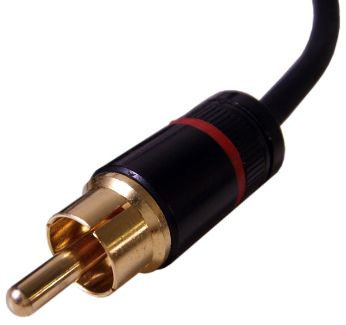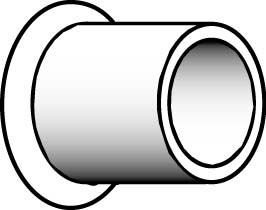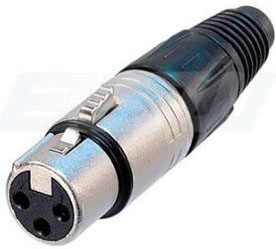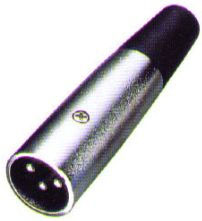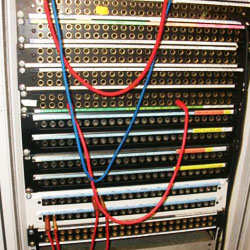
The 1/4-inch phone plug (Fig. 3) is used to connect unbalanced line-level or instrument-level signals.
This plug is part of a cable used with guitar amps, mixers, electric keyboards, electric guitars, and some power amplifiers.
A guitar cord has a phone plug on each end.
The tip of the plug is soldered to the cable’s center conductor; the sleeve or long cylinder is soldered to the cable shield.
You plug a phone plug into a phone jack (Fig. 4).
The plug is on a cable; the jack is in the chassis of a piece of audio gear.
Note that a jack is a receptacle; a plug goes into a jack to make a connection.
The RCA or phono plug (Fig. 5) is also used to connect unbalanced line-level signals. It’s commonly seen in stereo equipment.
The center pin is soldered to the cable’s center conductor; the cup is soldered to the cable shield.
An RCA plug connects to an RCA jack (Fig. 6). The plug on a cable; the jack is in the chassis of a piece of audio gear.
The 3-pin professional audio connector (XLR) is used with cables for balanced mics and balanced equipment.
The female connector (with holes) plugs into equipment outputs. The male connector (with pins) plugs into equipment inputs.
A female XLR cable connector plugs into a male XLR chassis connector (Fig. 9).
A male XLR cable connector plugs into a female XLR chassis connector (Fig.10).
An XLR connector has 3 pins (male) or 3 holes (female).
The pins or holes are numbered 1, 2, 3. In any XLR connector, pin 1 is soldered to the cable shield; pin 2 is soldered to the “hot” lead (usually red), and pin 3 is soldered to the remaining lead.

